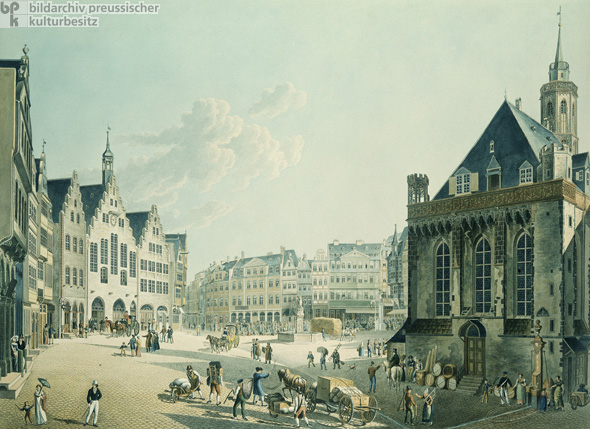|
View of the Römerberg with Church of Saint Nikolai in Frankfurt (1822)
Beginning in the 13th century, the city of Frankfurt played host to numerous trade and book fairs, becoming an important center for trade and finance in the process. This view of Frankfurt shows the Römerberg, the central square in the heart of the city. (The Römerberg still remains a popular place for public events and gatherings today.) In the middle of the square, we see the octagonal Justitia Fountain [Justitiabrunnen] from 1611. The building complex on the left, which consists of three gabled houses, gradually emerged as existing buildings were successively rebuilt and joined together, a process that started in 1405. The middle building, the Frankfurt City Hall (also known as the “Römer”) is the oldest of the three buildings; the first recorded reference to it dates from 1322. From the year 1147 to the end of the Holy Roman Empire of the German Nation in 1806, the “Römer” was the place where most of the German kings and Kaisers were elected and crowned. Why this important historical building is called the “Römer” (i.e., German for “Roman”) remains unclear to this day. The Church of St. Nikolai, which can be seen in the foreground on the opposite side of the square, was built from the 13th to the 15th centuries. The crumbling plaster of the church’s façade makes clear that St. Nikolai was in desperate need of restoration at the time this image was executed. For lack of funds, however, this work was first undertaken in 1838. Watercolor by Friedrich Wilhelm Delkeskamp (1794-1872), 1822.

|


